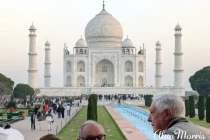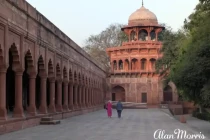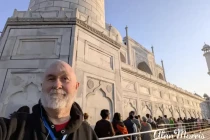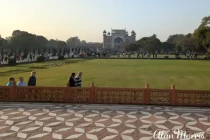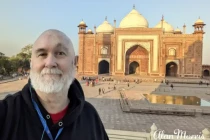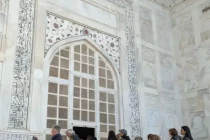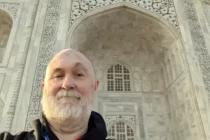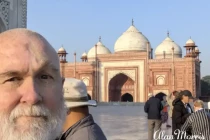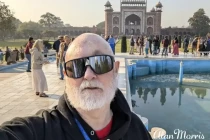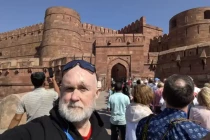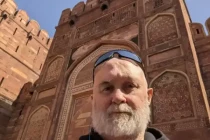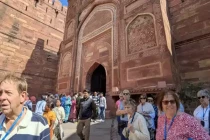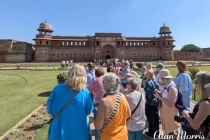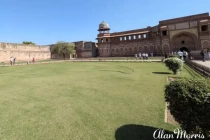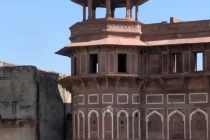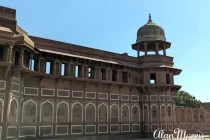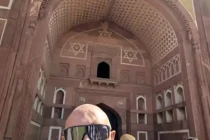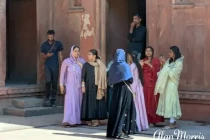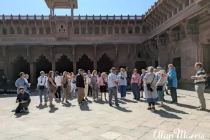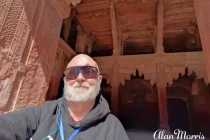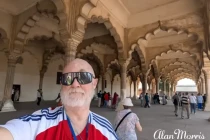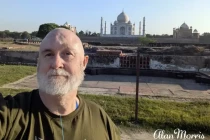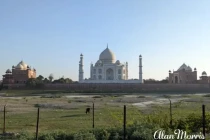The Taj Mahal is a symbol of eternal love and a masterpiece of architectural brilliance. Today, I visited this world-famous monument.
Taj Mahal.
The Taj Mahal is a stunning example of Mughal architecture, combining elements of Islamic, Persian, Ottoman Turkish, and Indian architectural styles. It is constructed of white marble and adorned with intricate carvings and inlay work.
The Taj Mahal was commissioned by Emperor Shah Jahan in 1632 in memory of his beloved wife, Mumtaz Mahal. It took approximately 22 years and 20,000 workers to complete. It serves as a mausoleum for Mumtaz Mahal and Shah Jahan himself, who was later buried there.
My visit to the Taj Mahal.
We left the hotel on our coach before sunrise to see the Taj Mahal. It was a little cold as we left, and many of us were wearing layers to keep warm. Our coach drove us through the streets of Agra to the Taj Mahal car park, where it parked, and we were transferred to tuk-tuks to make the last part of the journey. When we arrived at the entrance, there were already large queues of people. We joined the tourist queue. There were two different queues, one for tourists, Indian tourists as well as other nationalities, and one for locals.
We queued for a while and went through security, where bags, including camera bags, were searched and frisked. Ladies are taken to a separate entrance where there is a "modesty" tent to allow them to be searched and frisked out of view of the men in the queue. Once inside, our guide told us more about the history of the Taj Mahal, and we all took photos of our first glimpse of the magnificent Taj Mahal.
After our guide had told us about the Taj Mahal, we moved up to the main building where we joined a short queue to go inside. I didn't realise that you could actually go inside the Taj Mahal, I had always thought you could only look around the gardens, so I was happy to join the queue. The building itself is very ornate, and as I stood next to the vast, decorated outer marble walls, I looked at it in awe. The queue didn't take long for us to go inside, and we went in a single line. The Interior of the building was equally well decorated, and in the centre of the mausoleum are the cenotaphs for the Shah Jahan and his wife Mumtaz Mahal. The actual sarcophagi are beneath the tombs, at the garden level. We were not allowed to take photographs inside, and the line of people was kept moving by the guards inside. We were soon out the other side of the Taj Mahal on the side of the building that looks over the Yamuna River.
After we had looked around the grounds a little more, our tour group all assembled in the famous photo spot in front of the Taj Mahal for a photo. Once we had had our photo taken, we left the grounds and made our way back to the coach.
Taj Mahal Photos.
These photos were all taken at the Taj Mahal when I visited Agra. Click on any image to see a larger version and a description of the photo.
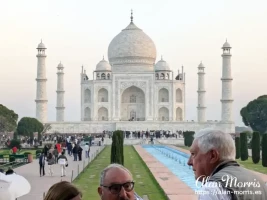
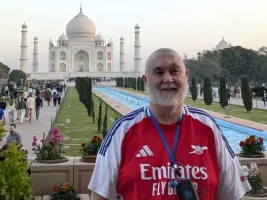
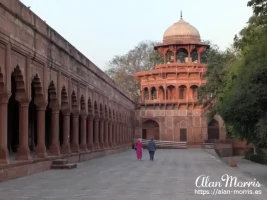
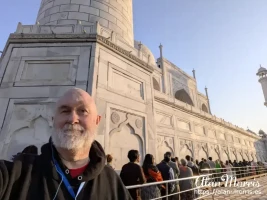
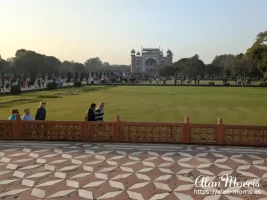

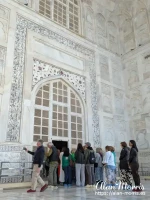

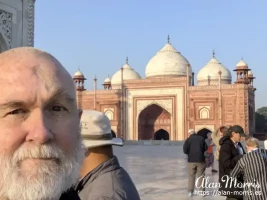
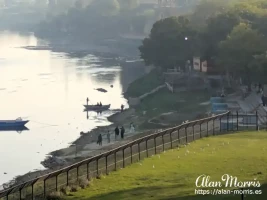
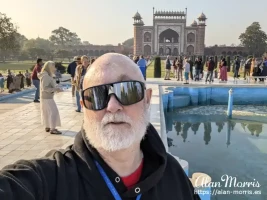
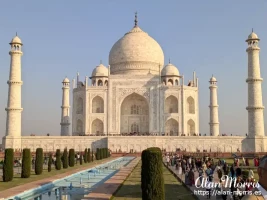
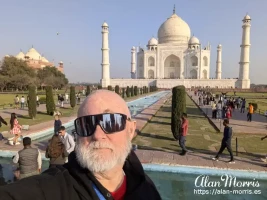
Agra Fort.
Agra Fort is a magnificent historical fort located in Agra. The fort is a UNESCO World Heritage Site and a stunning example of Mughal architecture. It is built primarily of red sandstone and features a blend of Islamic and Hindu architectural styles. The fort was initially built by the Mughal Emperor Akbar in 1565 and later expanded by his grandson Shah Jahan.
Agra Fort served as the primary residence of the Mughal emperors until 1638. It was also a military base and played a crucial role in the history of the Mughal Empire.
My visit to Agra Fort.
Agra Fort Photos.
These photos were all taken on my visit to look around Agra Fort. Click on any image to see a larger version and a description of the photo.
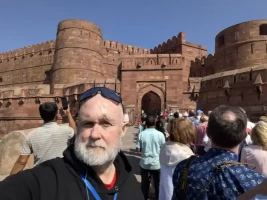
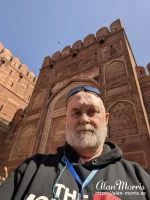
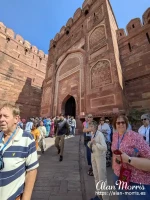
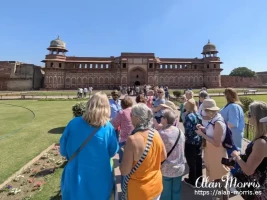
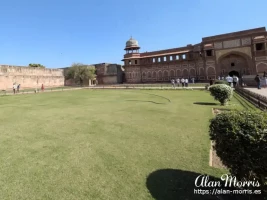
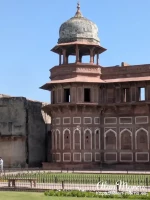
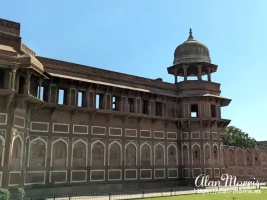
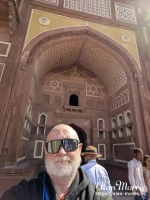
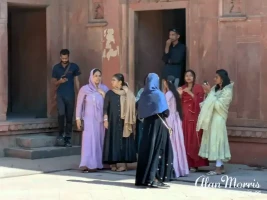
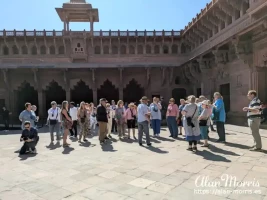
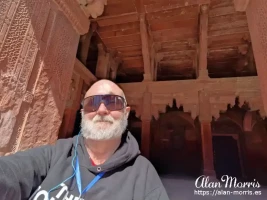
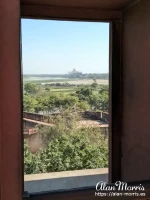
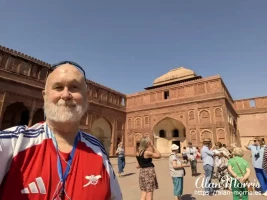
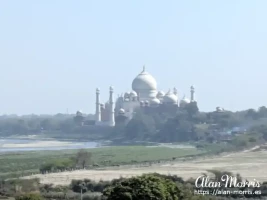
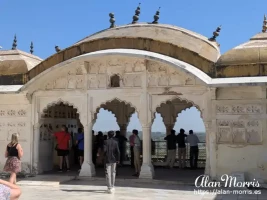
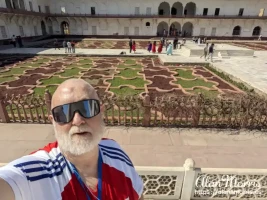
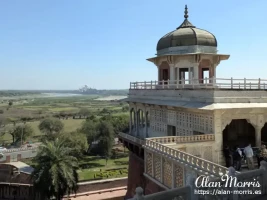
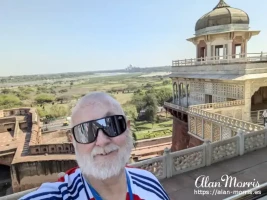
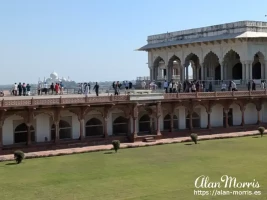
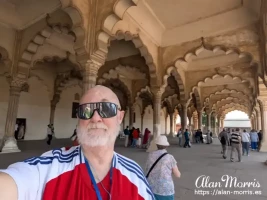

Mehtab Bagh.
Mehtab Bagh, aka the Moonlight Garden, is a beautiful Mughal garden complex located in Agra, India, directly opposite the Taj Mahal on the banks of the Yamuna River. The garden was originally built by Emperor Babur in the early 16th century and later perfected by Shah Jahan. The garden spans about 25 acres and is perfectly aligned with the Taj Mahal on the opposite bank. It features symmetrical landscaping, reflective water features, and an octagonal pond that mirrors the Taj Mahal.
The man behind its perfection, Shah Jahan, had grand ambitions for Mehtab Bagh. He envisioned building a black marble mausoleum for himself as a counterpart to the white Taj Mahal, creating a harmonious twin structure across the river. However, this dream was never realised because his son, Aurangzeb, overthrew him and imprisoned him in Agra Fort. Shah Jahan spent the rest of his life gazing at the Taj Mahal from his confinement.
My visit to Mehtab Bagh.
Mehtab Bagh Photos.
These photos were all taken during my brief visit to Mehtab Bagh. The gardens seemed to be a bit neglected to me, but the views they gave of the Taj Mahal on the opposite side of the Yamuna River were breathtaking. Click on any image to see a larger version and a description of the photo.
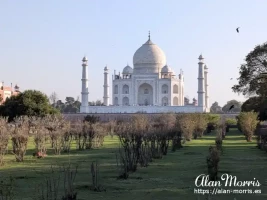
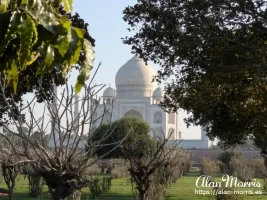
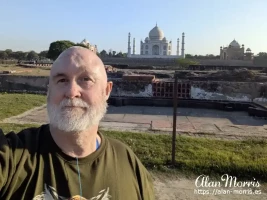
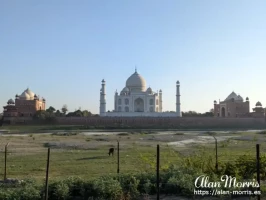
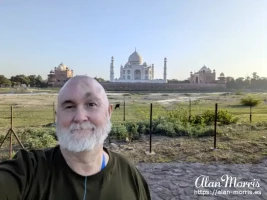
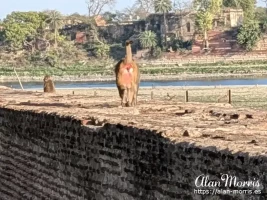
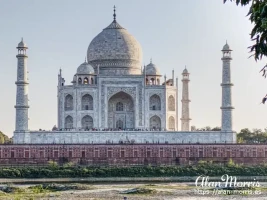
Grand Mercure Agra.
The hotel for my stay in Agra tonight was the Grand Mercure Agra.
Address: Fatehabad Road, 282001, Agra.













